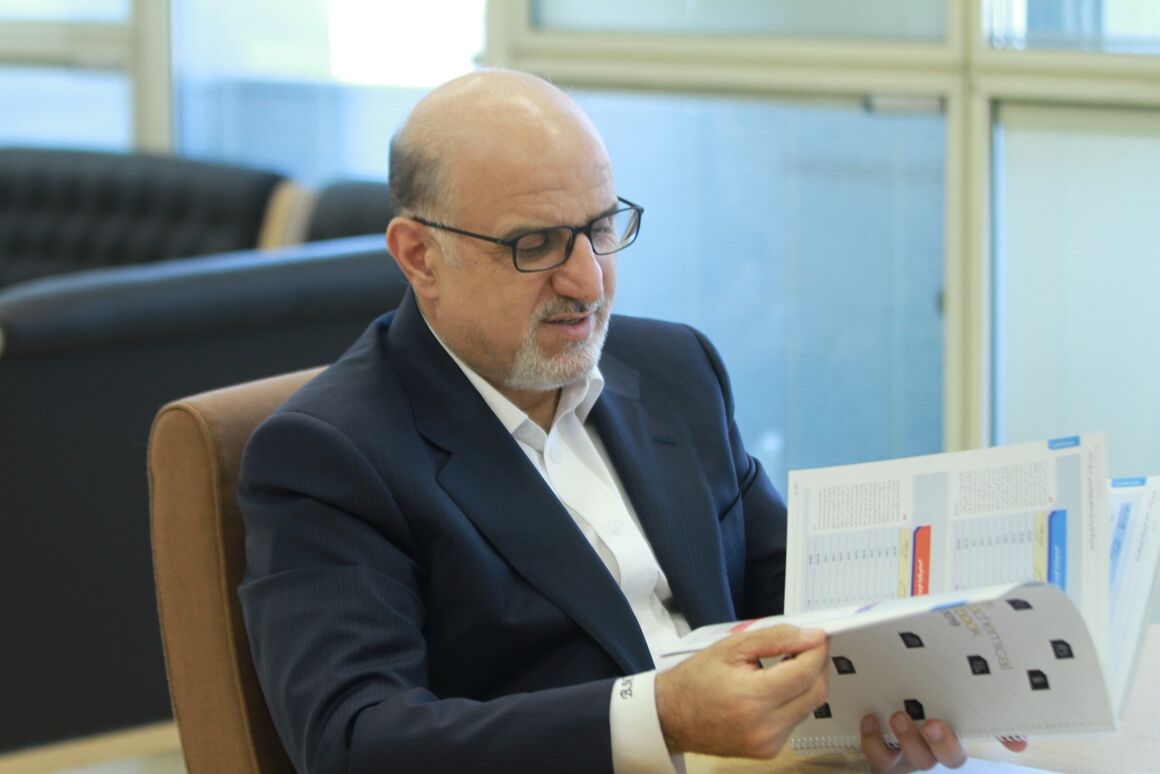Speaking to Shana, Behzad Mohammadi said that the only way to stay in the global market is to smarten the development of the petrochemical industry, adding, “We have to cast a global approach to the industry and implementing prolonged projects need to be put aside.”
The annual production of the petrochemical industry has been almost the same as in the preceding year in Iran, as no new plans were added to the country's petrochemical complexes last calendar year which ended on March 19; Out of about 31 million tons of final products in the year, 23 million tons were exported and 8 million tons were sold on the domestic market, of which 2 million tons were urea and about 6 million tons were supplied to the country's stock exchange and industries, Mohamamdi said in an exclusive interview with Shana.
“Given that the price of petrochemical products fell by an average of 30 percent last year, the total revenue of the petrochemical industry was $14.5 billion, of which $9.5 billion came from exports and $5 billion from the domestic market.”
The industry's biggest challenge with the tightening of sanctions was the increase in export costs, especially in the transportation sector, he added.
COVID-19 Pandemic
The outbreak of coronavirus at the end of the previous calendar year caused a sharp drop in demand, the NPC CEO who is also deputy petroleum minister for petrochemical affairs, went on to add.
“At the same time, declining consumption of products and declining demand for crude oil in the world led to a 40 percent decrease in demand for petrochemical products, the effects of which were seen in the new year. Currently, the situation is improving compared to March, and now trading on the stock exchange has decreased by 17% compared to April last year.”
Upcoming Projects
Inauguration of 16 petrochemical projects is planned for the current year, and with the opening of these projects, the production of the final products of the petrochemical industry will increase from 31 to 37 million tons in 1399. But the completion of four of these projects will be overshadowed by the outbreak of the coronavirus, but it is certain that 12 projects will be operational this year, at least one every month, he added.
Exploitation of these projects will add 20 million tons to the country’s annual production capacity while all the 16 projects, being developed with roughly $12b of investment, will add 25 million tons to the production capacity of the industry, he said. These will bring Iran’s total petrochemical production capacity to 86 million tons per year from currently 66 million tons by March 2021.
Kaveh, Bushehr, Ilam Olefin, Bidboland Persian Gulf gas refinery, Middle East Kimia Pars, Lordegan Urea and Ammonia, Masjed Soleiman Urea and Ammonia, Hegmataneh, Ibn Sina Petrokimia, Assaluyeh Exir Solvent, Miandoab, Di Arya Polymer, Sepehr Parsian Refinery, Arta Energy, Kangan Petro-refinery, and Sabalan are the projects that will undoubtedly come on stream in the current calendar year.
One of the good and attractive projects that has been inactive for 10 years and has been activated in the last one or two years is Hegmataneh Plant. This project is a producer of medical grade PVC that has not been produced in the country previously. Also, Exir Solvent Plant will be a producer of Pentane and Hexane, which are among new items in the Iranian petrochemical industry.
Propylene
Iran has been facing a shortage of propylene for years. The country’s propylene production in 1404 (2025) will be 4% of its total petrochemical production, while this figure will be 18% worldwide, 21%, in China and 17% in the United States and 16% in Saudi Arabia.
Currently, with the production of 985,000 tons of propylene by Iranian refineries and petrochemical plants, there is a shortage of 175,000 tons of this product in the country. In the calendar year of 1404, the amount of propylene production will reach 1,950,000 tons, while Iran will be facing an annual shortage of about 700,000 tons of the item. In order to tackle this projected shortage, the first step is to launch projects with methanol and propylene output.
For production of at least 3 to 3.5 million tons of propylene in Iran, two propylene lines have been considered; First, the southern line to the center, from Assaluyeh to Marvdasht, which will be developed by the National Petrochemical Company. The methanol surplus in Assaluyeh will be used to produce propylene to be injected into the 430-km pipeline to Marvdasht to be stored in a storage hub.
Secondly, the Alborz pipeline, where propylene will be produced from natural gas in Amirabad and transferred from Amirabad-Neka to Damghan, to be distributed later in the provinces of North, Razavi and South Khorasan, Semnan and surrounding areas.
On the other hand, the GTPP project of Islamabad West is being implemented by the National Petrochemical Company in western Iran in order to develop the propylene production chain. All of these projects will be GTPP (gas to propylene) or MTP (methanol to propylene), both of which being developed for completion of the propylene production chain and eliminate the country's need for imports. The technical savvy for building these plants will be provided by the Petrochemical Research and Technology Company (PRTC).


Your Comment